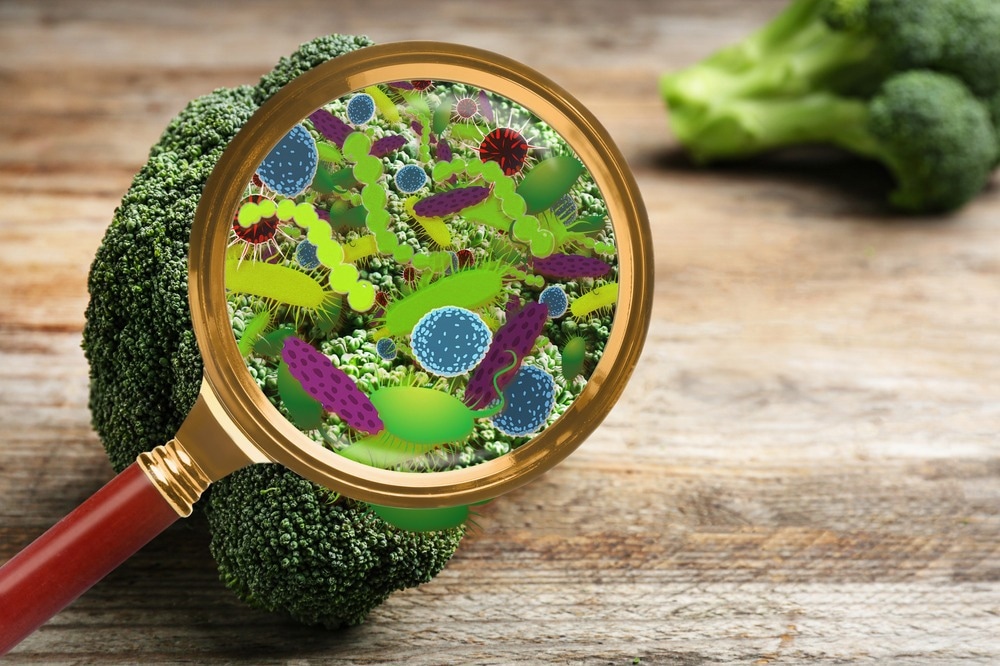Many of us think that microbes and bacteria are harmful to us. However, a growing body of research demonstrates that in many cases, quite the opposite is true. The link between gut microbes and physical and mental health has been strengthened over recent decades as scientists gather evidence highlighting the importance of microbes for human health.

Image Credit: New Africa/Shutterstock.com
Here, we explore two distinct scenarios of how food microbes are being used to save lives by detecting contamination in food and reducing the life-long health problems that arise from childhood malnourishment.
Detecting food contamination with food microbes
In 2015, Microbe researcher Robert Prill gave a TED talk entitled ‘The microbes in our food can save lives’. In this talk, he discussed the case of how milk contaminated with melamine led to the illness and death of numerous babies in China several years previous. He highlighted the importance of establishing a system to detect food contamination reliably. Food supply chains are global, and the risk of adulteration impacts the whole world.
Robert Prill suggested that decoding the food microbiome presented an opportunity to prevent future food adulteration disasters. Technology has already developed to allow us to read microbiomes. DNA sequencing enables us to identify and quantify microbes that exist in a community. Introducing contaminants such as chemicals, nutrients, and organisms into food disturbs the microbiome, which can be detected in the DNA. If a baseline measure of the microbiome is available, scientists can detect when the microbiome has been altered, indicating the possible introduction of a contaminant. The DNA tells scientists what the contaminant is, as well as how it affects the microbiome. This idea of comparing microbiome profiles is known as microbiome fingerprinting.
It may be several years before microbiome fingerprinting realizes its potential in food safety; however, once the technology is available, it could save many lives by preventing humans from consuming contaminated food.
The microbes in our food can save lives | Robert Prill | TED Institute
Reducing the life-long health problems that arise from childhood malnourishment with food microbes
Food microbes may also be valuable in promoting the health of children who have suffered malnourishment. Approximately half of all deaths in children under five years old are caused by undernutrition. Lack of access to sufficient nutrition increases a child’s risk of dying from common infections, increases the frequency and severity of these infections, and prevents recovery. Recent data has revealed that around 3.1 million children worldwide die each year from undernutrition, and around 160 days of illness are suffered per undernourished child. The evidence shows an urgent need to protect children from malnourishment and help them recover from its effects.
Later in life, children who have survived malnourishment continue to suffer from physical illness and mental deficits. They are at an increased risk of infection, show cognitive delay, often have stunted growth, and present poor impulse control. These factors reduce a child’s performance in school and limit their future employment opportunities.
For many years, the main strategy to help children recover from malnourishment was to attempt to make up for their calorific intake by putting them on a diet of high-calorie, high-protein-rich foods, such as fatty milkshakes. However, scientists are now looking at the problem from a different perspective. In recent years, a growing amount of evidence has shown that gut microbiota is vital to human health (both physical and mental). Malnutrition can disturb the microbiota, and scientists now theorize that replenishing the microbiota may provide a more effective solution to allowing children to recover from malnutrition.
Ground-breaking research shows that disruption of the gut microbiota may be linked with many long-term consequences of malnutrition. Scientists believe that correcting the microbiota balance could help children get back on the right path and avoid the life-long effects of malnutrition.
We already know that diverse gut microbiota can help to protect children against serious infections such as shigella, listeria, and salmonella, and the gut microbiome has become a key potential target in psychiatry. Additionally, we also have evidence that the gut microbiome plays a crucial role in supporting a healthy immune system. Therefore, there is already much evidence to support the strategy of targeting the microbiome to help children recover from malnourishment.
Looking forward
Much more research must be conducted before treatments focused on gut microbiota are available to treat children with malnourishment. However, scientists have spent many decades collecting information and analyzing gut microbiota and its expansive roles within the human body, so there is already a good foundation of knowledge.
Treatments are being tested, which would need to go well before they could be widely adopted; however, this is a promising field of work that will likely prove to be important in fighting the effects of malnourishment. In the future, further techniques that target the microbiome may be established to treat other illnesses.
Further Reading